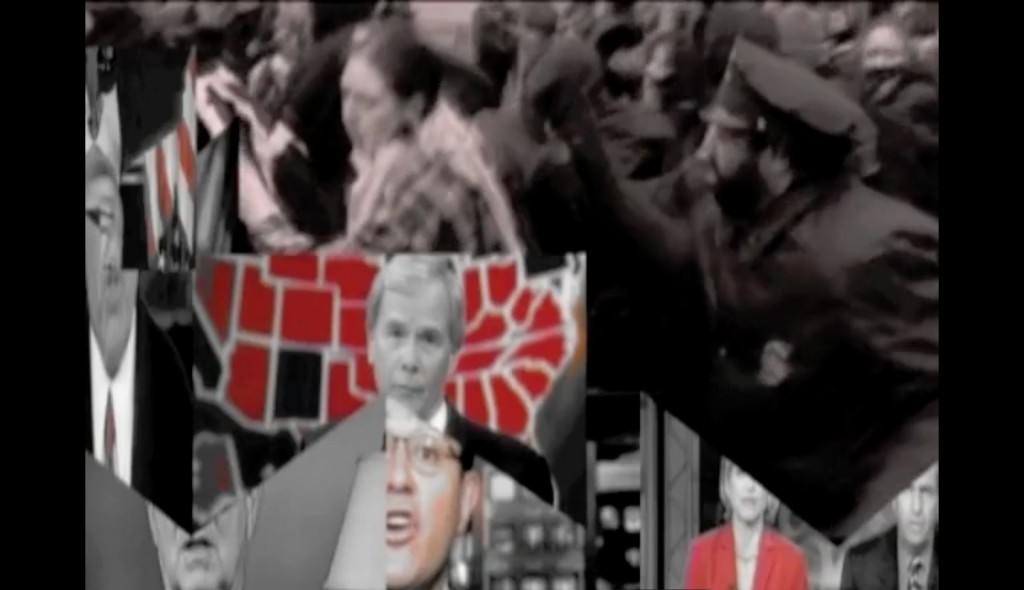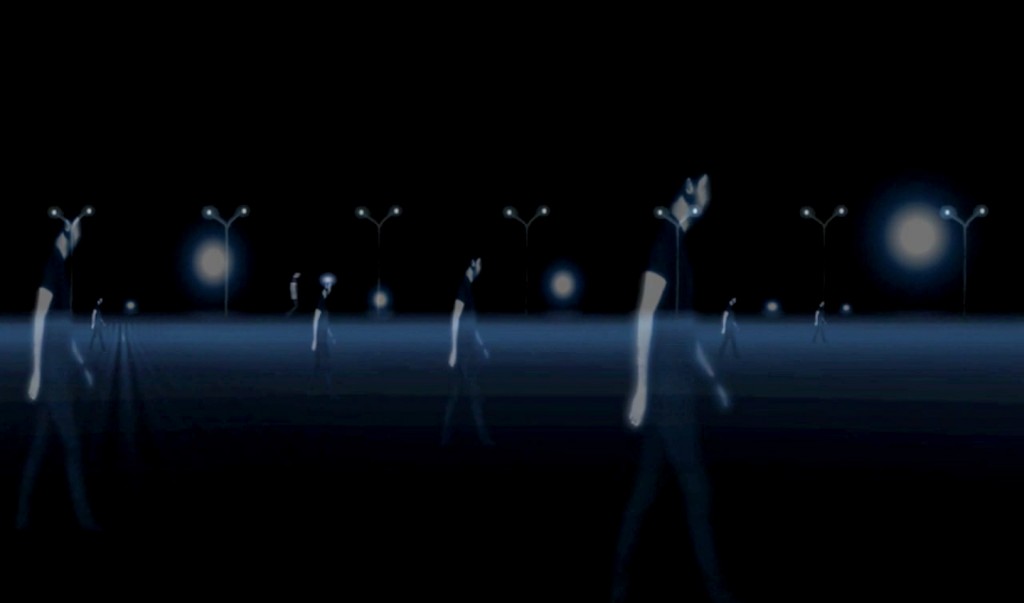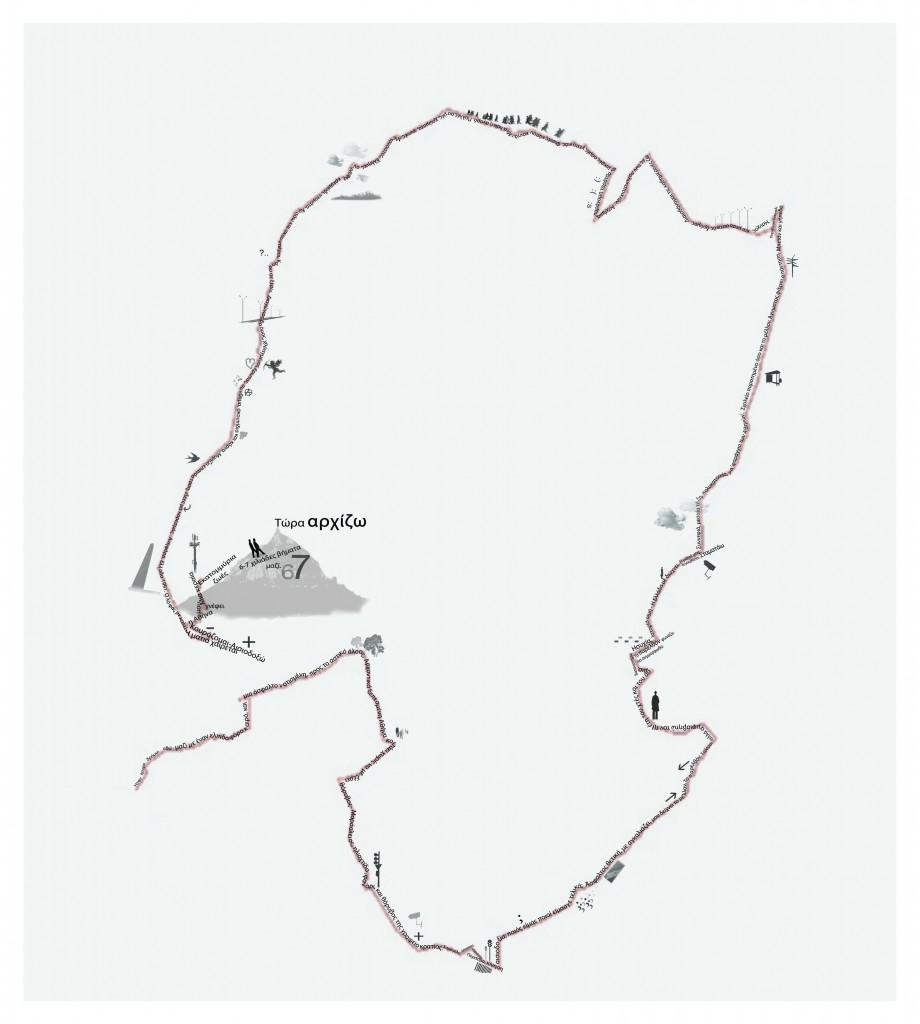
Bill Psarras (1985, Greece) is an artist and musician based in London. After completing his BA and MA in audiovisual arts (Greece) and digital arts (UK), he is now a PhD candidate (Goldsmiths University of London), conducting practice-based research on the exploration of emotional geographies of the city through artistic walking and embodied media practices (AHRC partly funded). Bill’s work has an intermedia approach mostly based on audiovisual installations, walking as art, video/digital art, soundscapes and music. His work has been exhibited in various international festivals in Europe, US and Australia as well as in several group exhibitions of cultural organizations and galleries (Visual Dialogues 2013 – Onassis Foundation, ROOMS 2013, WPA Experimental Media, RA Summer Exhibition 2010). Goethe Institut has also included his work for the database of Greek artists in the ongoing media art project ‘Art Up’. He has published and talked in international conferences and symposia including ISEA 19th (Australia, Portugal, UK, Greece, Netherlands, Germany, France). He is a rock guitarist and the man behind the soundtrack music project Ludmilla MS.
Eva Kekou: Can you give us some info about your background?
Bill Psarras: My engagement with arts and music started in a very young age, with the latter being my initial channel of creativity. What’s more, I always had a big appreciation for maps and geographical imagination, and it seems this might have played some role in my initial decision to study Geology before changing academic directions later into arts. After BA and MA studies in Greece (Ionian University) and UK (University of the Arts, London), my background was specialized on the audiovisual arts and aesthetics. This is something that has impacted the nature of my artworks, which are mainly audiovisual – associated with the fields of video art, digital art, installations and soundscapes.
When I moved to London for further studies, the experience of living in a metropolis had a strong impact on both my practice and consideration. Issues of in-betweeness and emotionality in the city became central inspirational channels; indicating again my artistic “turn” to a spatial and geographical sensitivity. Yet, I think my one-year practice-based research during MA shifted my approach to a more interdisciplinary thinking. At the current moment, I am near the completion of my PhD in Arts & Technology programme of Goldsmiths University of London – research that has been partly funded by AHRC.

EK:Can you give us some information about your research?
BP: Yes – as said, my interest on spatial and geographical sensitivities impacted on the direction of my research. So, what I am doing in particular? I conduct practice-based research on the exploration of emotional geographies of the city through walking as art and embodied media practices. As my research has a quite anthropocentric colour, my focus falls in spaces of transition in the everyday life – such the streets and Tube stations.
In other words, the main core of my PhD is the exploration of urban walking. Consequently, the multi-parametric nature of walking automatically ascribes my research an interdisciplinary character. I’m drawing from the fields of contemporary art/technology, cultural geography, sensory anthropology and urban studies.
So, let’s define this interdisciplinarity. As my walking art practice has influenced my research steps, I investigate the aesthetic significance of urban walking, which is mainly defined through the concepts of flaneur and psychogeography. Departing from a trajectory of intellectual opinions, expressed mostly from W. Benjamin, C. Baudelaire, G. Debord and De Certeau, I explore the potential of a contemporary flaneur of 21st century city, which is defined by a combination of sensory, social and technological features. So, the focus on sensory, social and technological aspects constitutes my vehicle towards a creative connection between contemporary artistic flanerie and emotional geographies. It is thus a re-consideration of the flaneur for the 21st century city through an orchestration of media, senses and technology.

EK: How is your interest in new media and cities reflected in your work?
BP: I consider the city a nexus of social, emotional, political and technological trajectories. Since my BA years, I have had an interest in the emotional experience within the city. Later, this was developed through a series of artworks, as in Elevator (2009), Nexus (2010), Walking Portraits: Performing Asphalts (2012) and Emotive Circle (2013), among others. These works include an interdisciplinary study on the aesthetic aspect of anger in the city and the notions of transience and fleeting in non-places, as well as a more walking-oriented set of performative works based on the personal or shared sensory and emotional experience out in the streets.
During the last 3 years, I have considered walking in the city as part of my art-practice – particularly as an aesthetic and symbolic action of coming into contact with the liveness of the social fabric. Through these artworks my interest has shifted from a visual representation to a combination of embodied locative technologies (like GPS) and audiovisual means as a way of mapping or presenting the lived experience and the poetic intentions of contemporary flanerie.

EK: How is space important to your art practice? How is space compressed through new media and how can this compression be linked to new ways of expression?
BP: Indeed, what has been called a “spatial turn” in arts and humanities, has created emerging tendencies of creative expression. I think this spatial turn might indicate a need to re-explore socio-cultural and geographical imagination through the use of new tools such as GIS or other locative technologies. What I strongly believe is a re-consideration of space and geographical imagination within urban environments – where creativity, conflict, power, temporality are elements that extend the meaning and significance of the former. Space and geographical imagination has thus become an arena of discourse in contemporary art practices – providing a great potential for revealing invisible geographies of the 21st century city.
EK: What are your future projects, plans and aims?
BP: Well, ideas bring expectations and the expectations bring motivation – and this is how this process resembles walking. Regarding my art practice, I am preparing a couple of ideas around the emotionality of public space, which I am hoping to exhibit in the future. Still, walking and different technological integrations will be central to me, as I would like to explore further ideas about the emotional and social entanglement between the artist and the co-walkers. Part of plan is also the completion of my PhD in the near future – something that will broaden my research into more experimental and creative aspects of walking as art, of the senses, of cities and of emotional geographies.
This is a very inspiring interview for those of us who seek to live, experience, and express as fully as possible. As a non-artist humanities academic, I often send my students on walks during class time when it’s clear that bodies have made their way to the classroom but the spirit resides elsewhere. It’s an attempt to connect somehow, to see and hear and smell the world around us. Then I require some descriptive but otherwise loose writing to process and convey the experience. My students express gratitude for these small immersions and produce wonderful writings.
I teach a very diverse global population and could also not help noting how fortunate Bill is to have the leisure and space in which to do his wonderful work, and that his burden must be great, given the state of so many Greeks today.